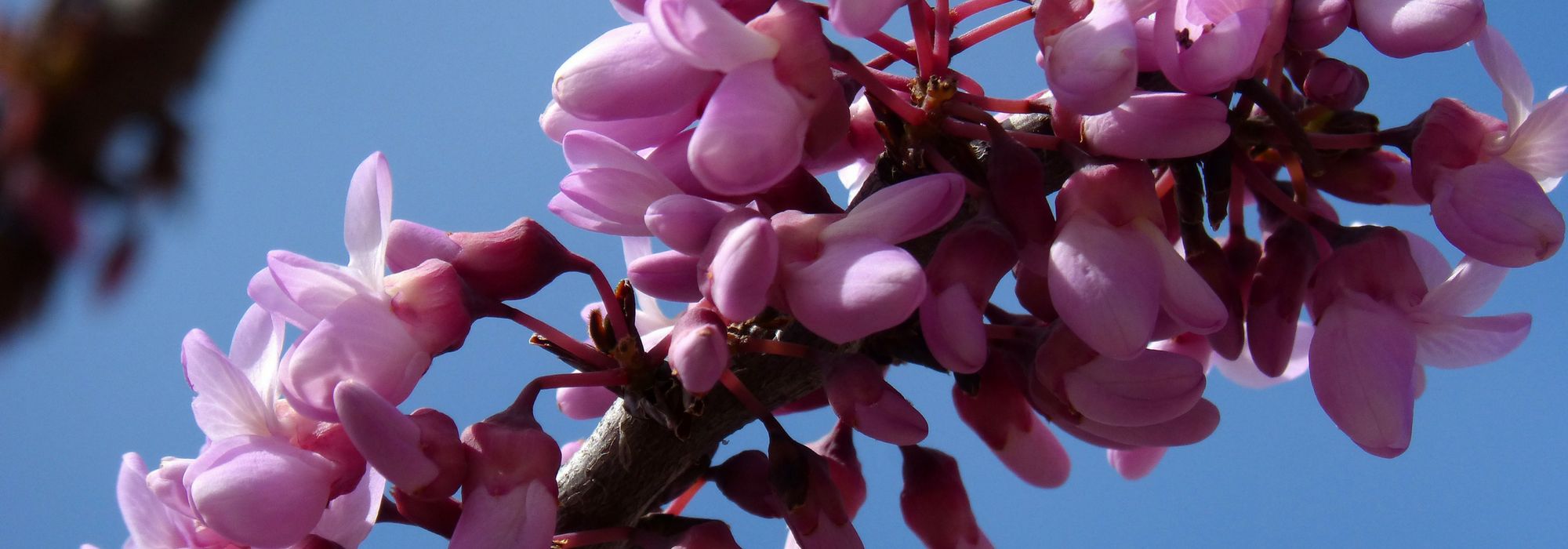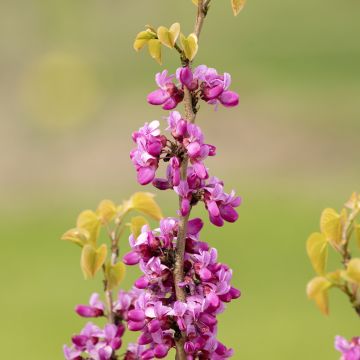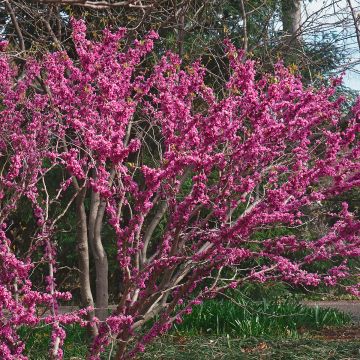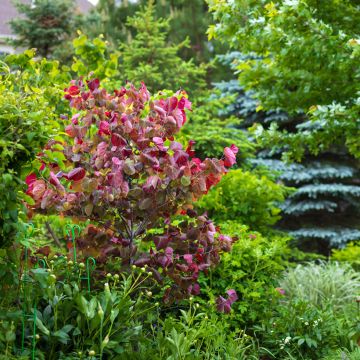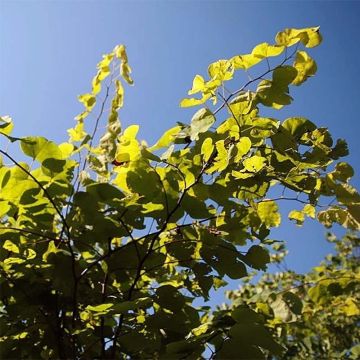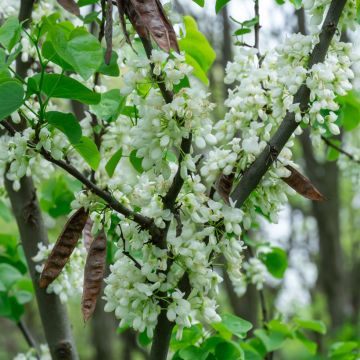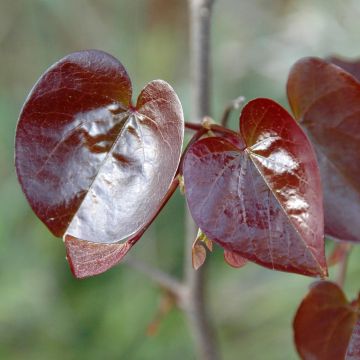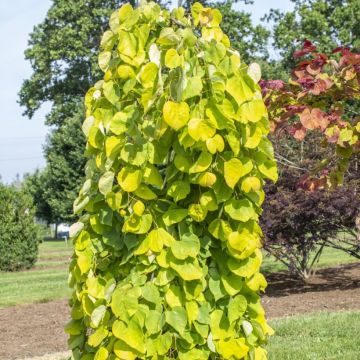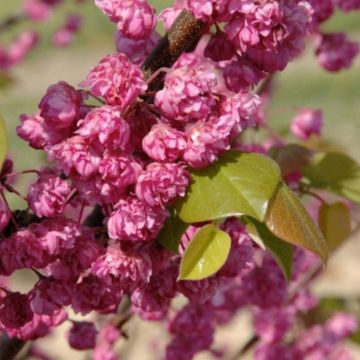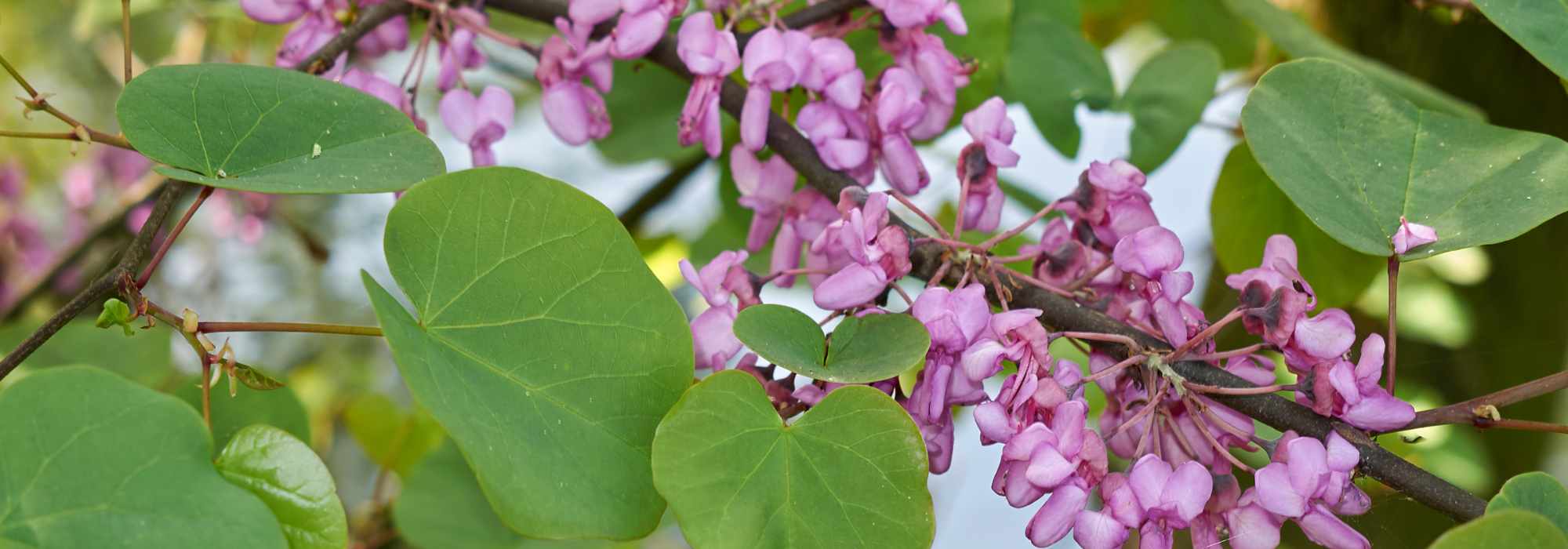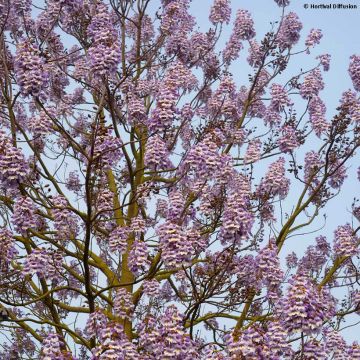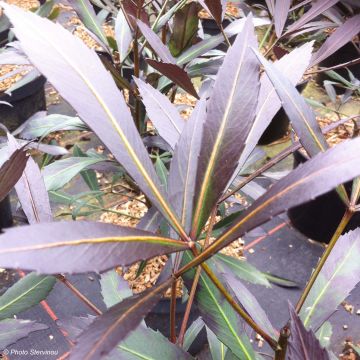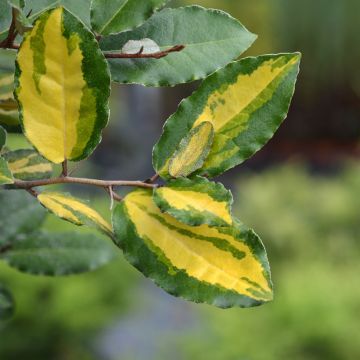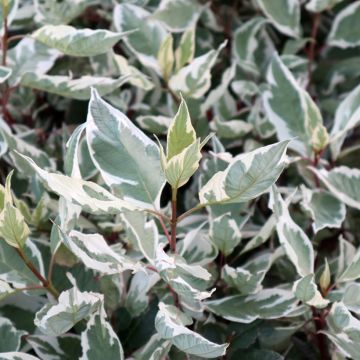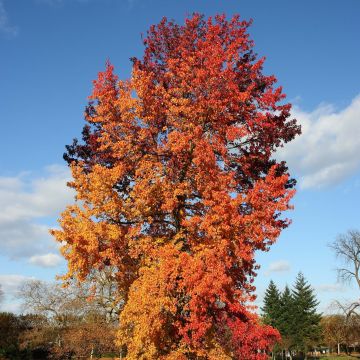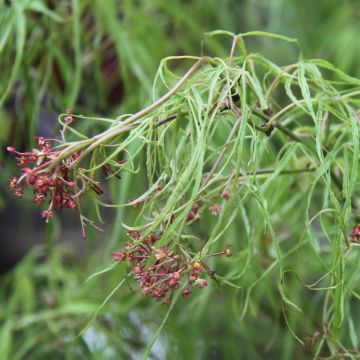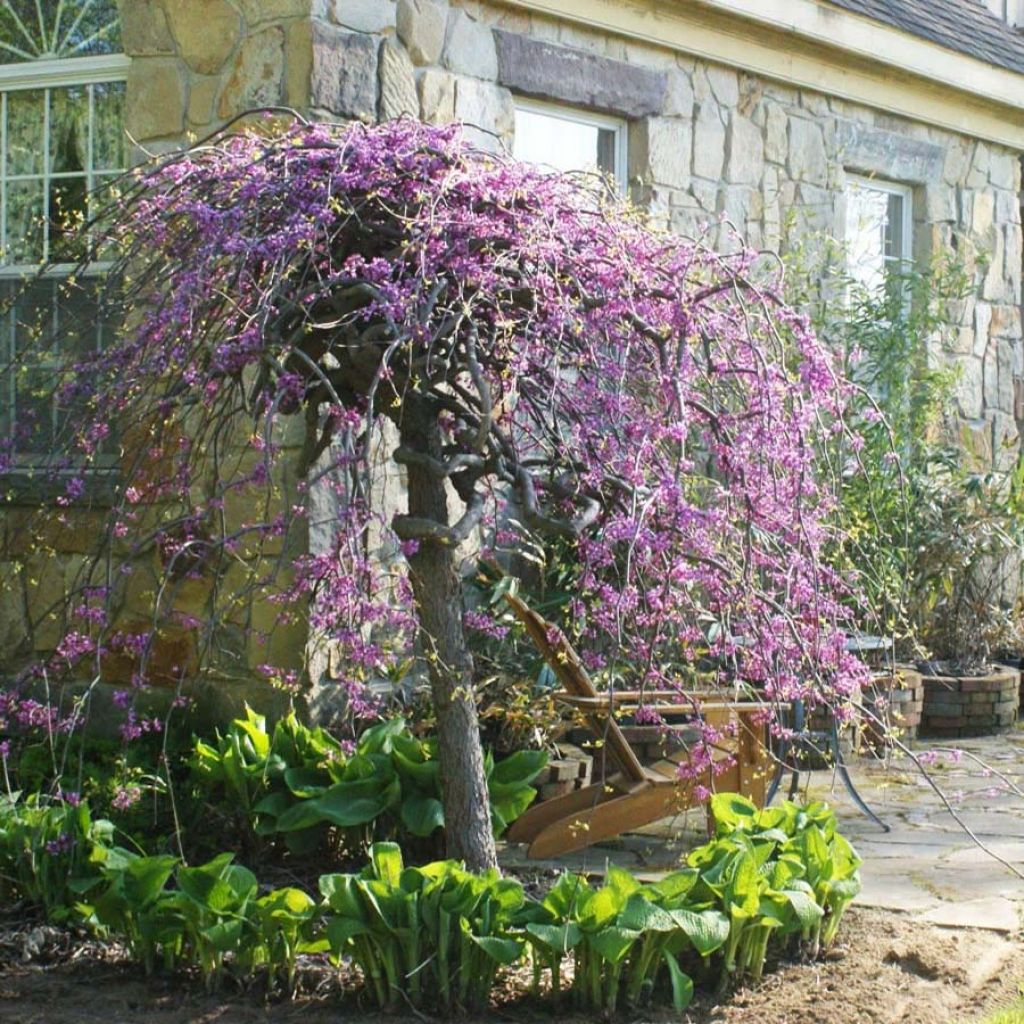

Cercis canadensis Lavender Twist - Eastern Redbud
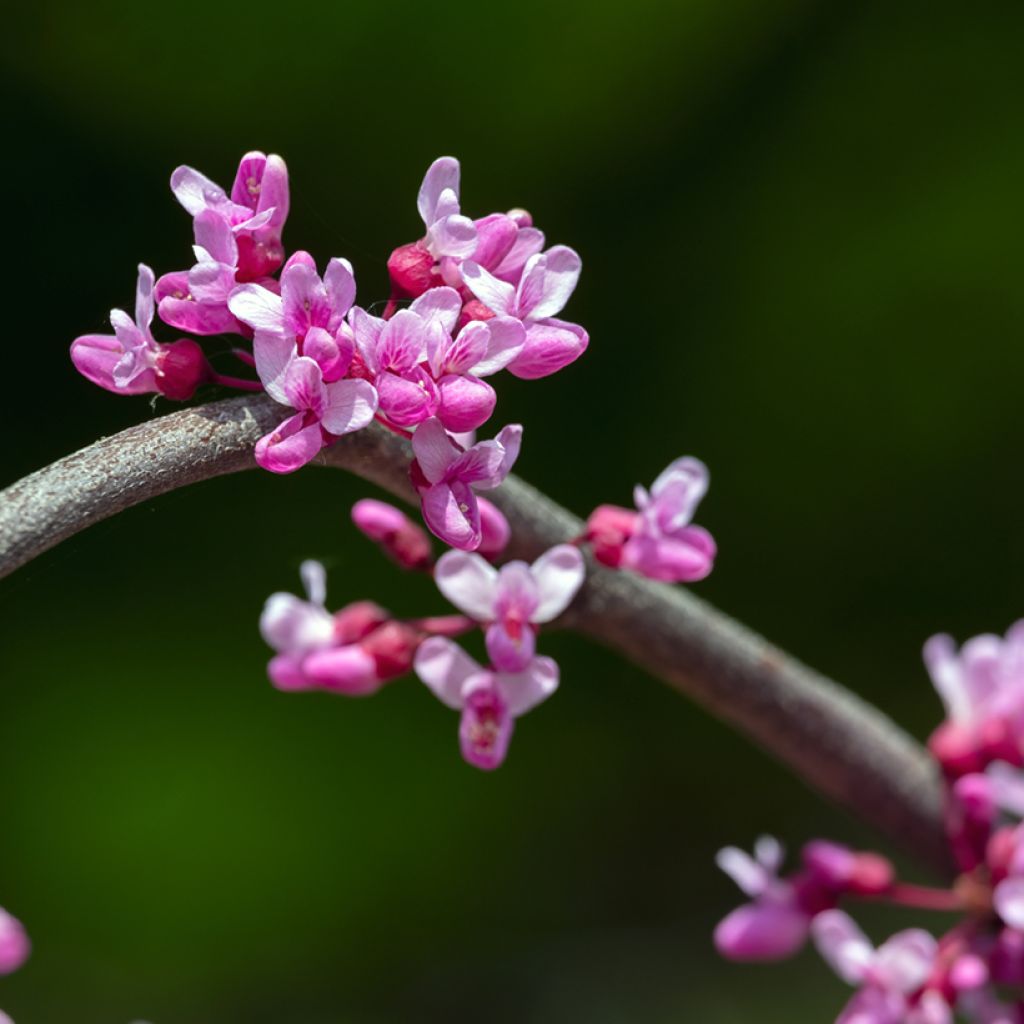

Cercis canadensis Lavender Twist - Eastern Redbud
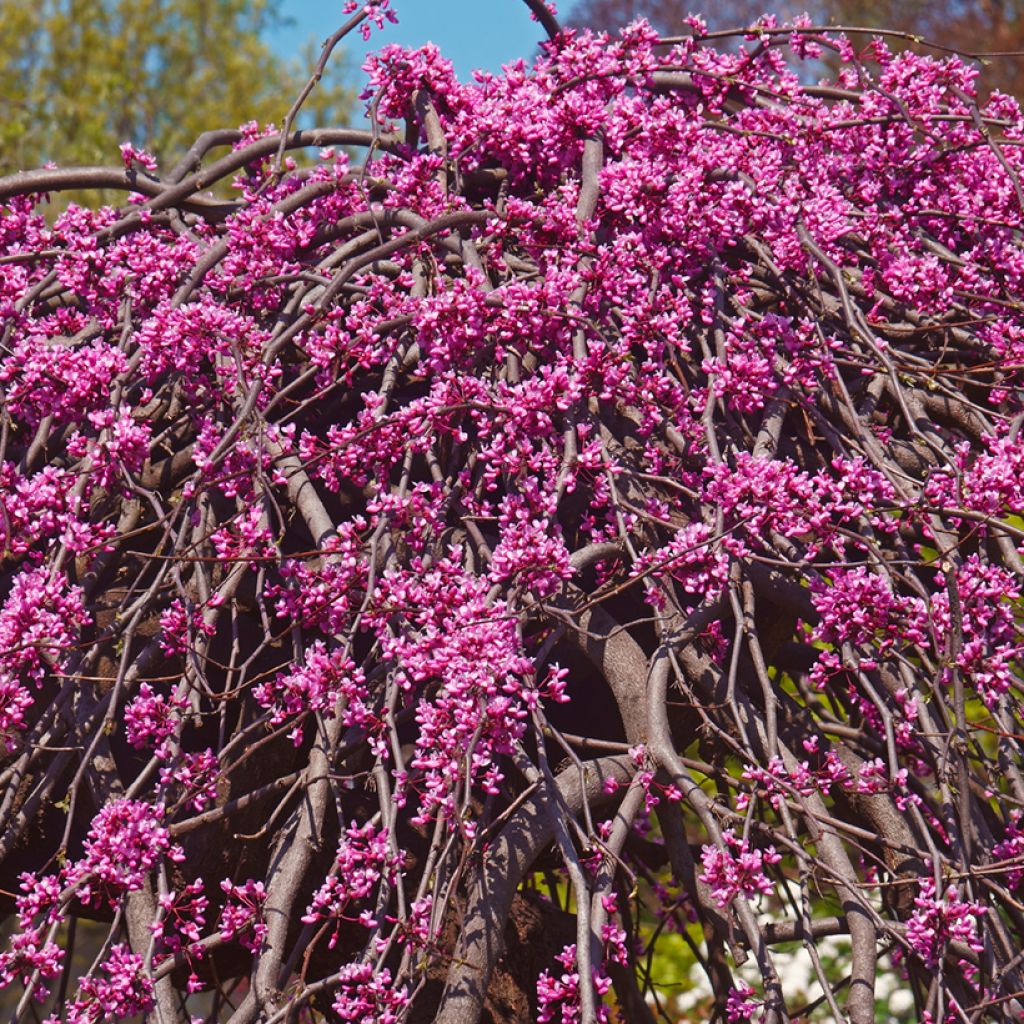

Cercis canadensis Lavender Twist - Eastern Redbud
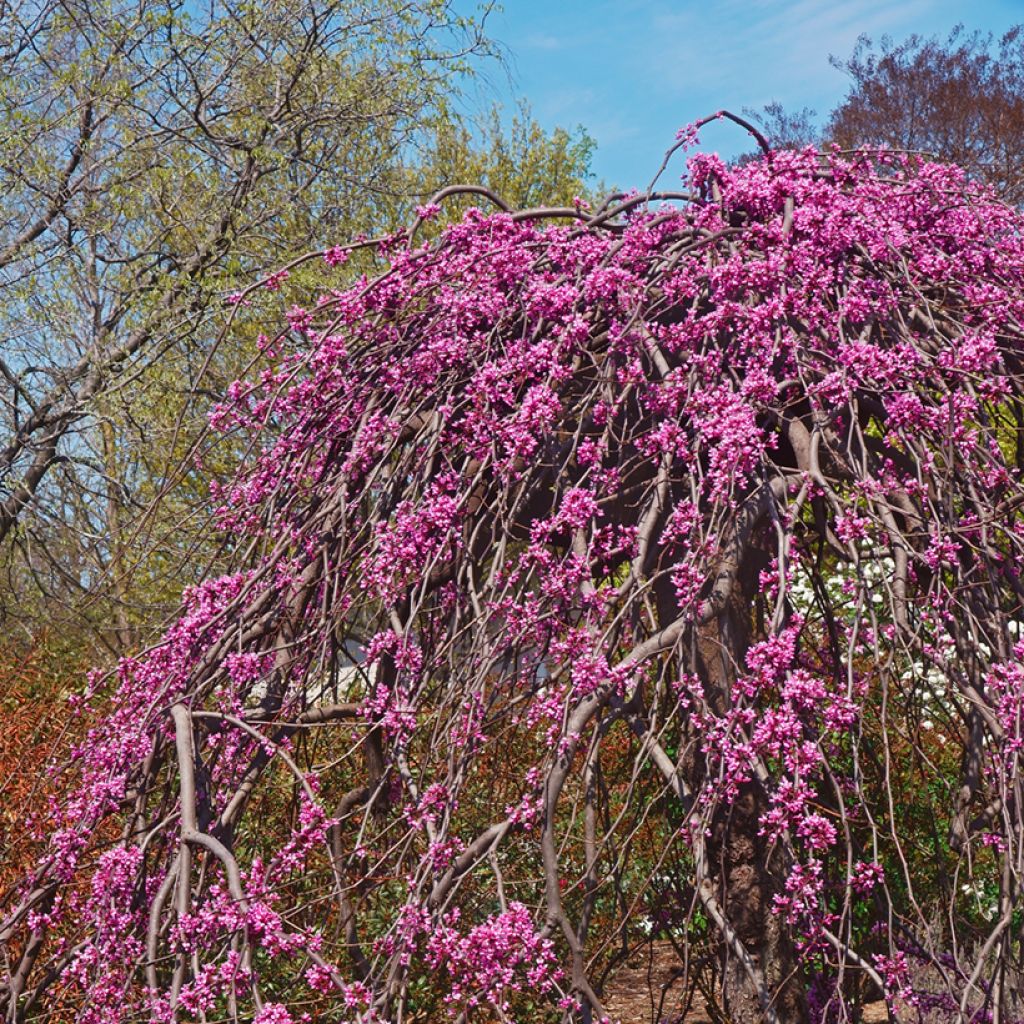

Cercis canadensis Lavender Twist - Eastern Redbud
Cercis canadensis Lavender Twist - Eastern Redbud
Cercis canadensis Lavender Twist
Eastern Redbud, Canadian Redbud, American Redbud, Judas Tree
I received my Judas tree a few weeks ago, undamaged with beautiful branches. I planted it right away. Its flower buds are starting to appear. I can't wait for its flowering.
Karine , 26/03/2025
Special offer!
Receive a €20 voucher for any order over €90 (excluding delivery costs, credit notes, and plastic-free options)!
1- Add your favorite plants to your cart.
2- Once you have reached €90, confirm your order (you can even choose the delivery date!).
3- As soon as your order is shipped, you will receive an email containing your voucher code, valid for 3 months (90 days).
Your voucher is unique and can only be used once, for any order with a minimum value of €20, excluding delivery costs.
Can be combined with other current offers, non-divisible and non-refundable.
Home or relay delivery (depending on size and destination)
Schedule delivery date,
and select date in basket
This plant carries a 24 months recovery warranty
More information
We guarantee the quality of our plants for a full growing cycle, and will replace at our expense any plant that fails to recover under normal climatic and planting conditions.

Would this plant suit my garden?
Set up your Plantfit profile →
Description
Cercis canadensis Lavender Twist is a recent variety of Eastern Redbud, still uncommon in our gardens. This small weeping tree is one of the most astonishing of its kind and its modest size allows it to be adopted even in limited spaces, in open ground in a small garden or on a sunny terrace. In spring, it is transformed into a cascade of Japanese-looking pinkish-purple blooms. Its pea-like flowers adorn the trunk and bare branches, just before the appearance of translucent red shoots. It is also a very accommodating plant, as long as the soil it is planted in is not too dry.
Cercis canadensis is native to eastern and central United States, and belongs to the Fabaceae family. It can reach a height of 12 m (39.4 ft) in its natural habitat but rarely exceeds 4 m to 7 m (13.1 ft to 23 ft) in cultivation. It forms a more or less twisted tree, with branches close to the ground, often wider than tall. The Eastern Redbud has given rise to numerous varieties with different habits, flower colours, and foliage.
Lavender Twist was born in Israel. It stands out for its weeping habit but also because of its particularly twisted branches going in all directions and hanging down to the ground. Like all representatives of the Cercis genus, its foliage is deciduous but the tree retains its interest in winter thanks to its sinuous and unusual silhouette. The Lavender Twist variety does not exceed 3.5 m (11.5 ft) in height with a spread of about 2.5 m (8.2 ft). Flowering takes place in April-May depending on the climate. Its drooping, leafless branches are adorned with an abundant pinkish-purple flowering, which is highly appreciated by pollinating insects. The pea-like flowers are particularly numerous, clustered along the branches. Once flowering is over, it is covered in heart-shaped leaves. When they emerge, they are purplish, then gradually turn bright green. In autumn, the show ends in a flourish as the leaves turn bright yellow before falling. Older specimens often have a twisted framework that gives them a fascinating, very Japanese-like silhouette.
It forms a unique and attractive shrub almost all year round. It takes up little space and has a strong personality, adding a unique touch to a small garden or in the centre of a large bed. It only requires fairly deep soil, regardless of its nature, even limestone. It is very hardy, and does not require any particular pruning: in short, it is a very accommodating plant that can thrive in any garden!
Lavender Twist can be planted as a specimen for its year-round presence, especially in a space dominated by mineral elements, surrounded by large rock stones. An older specimen, carefully trained in an 'umbrella' shape on a sinuous trunk, could also make a good impression on a carpet of Mascarene grass (Zoysia tenuifolia), standing in the middle of a small Japanese scene. It is also easy to imagine it standing out against the background of a wall or evergreen foliage, accompanied by Elderberry 'Plumosa aurea' and Ceanothus 'Concha' for colour and shape contrast, with a few Darley Heath and hellebores for winter! You could even consider planting it with a dwarf winged Euonymus and a beautiful 'Grace' Smokebush for splendid autumn colour.
Cercis canadensis Lavender Twist - Eastern Redbud in pictures
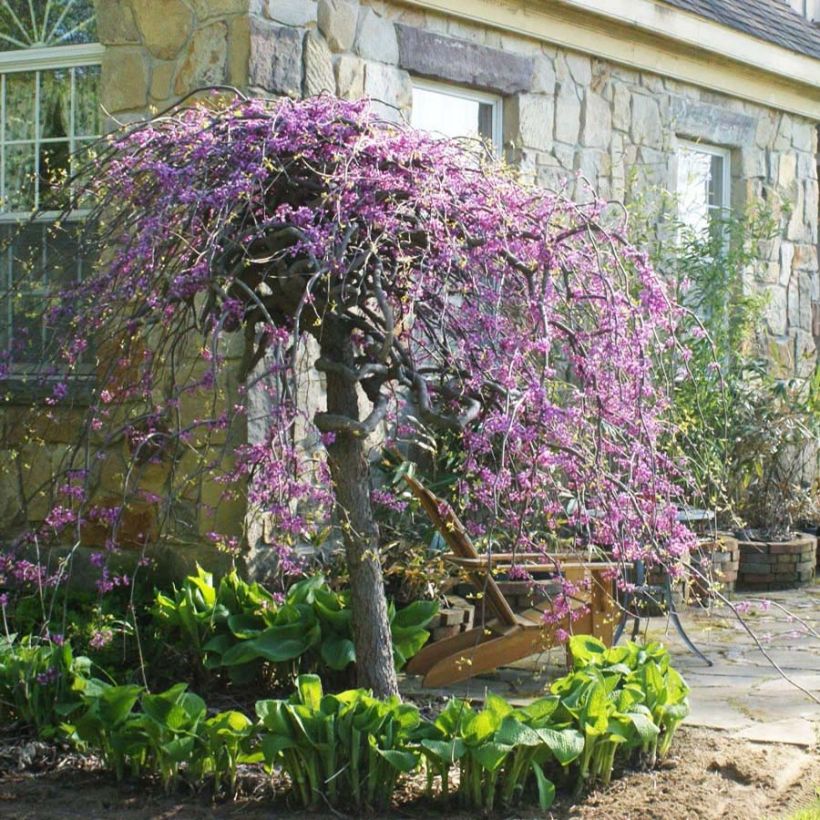

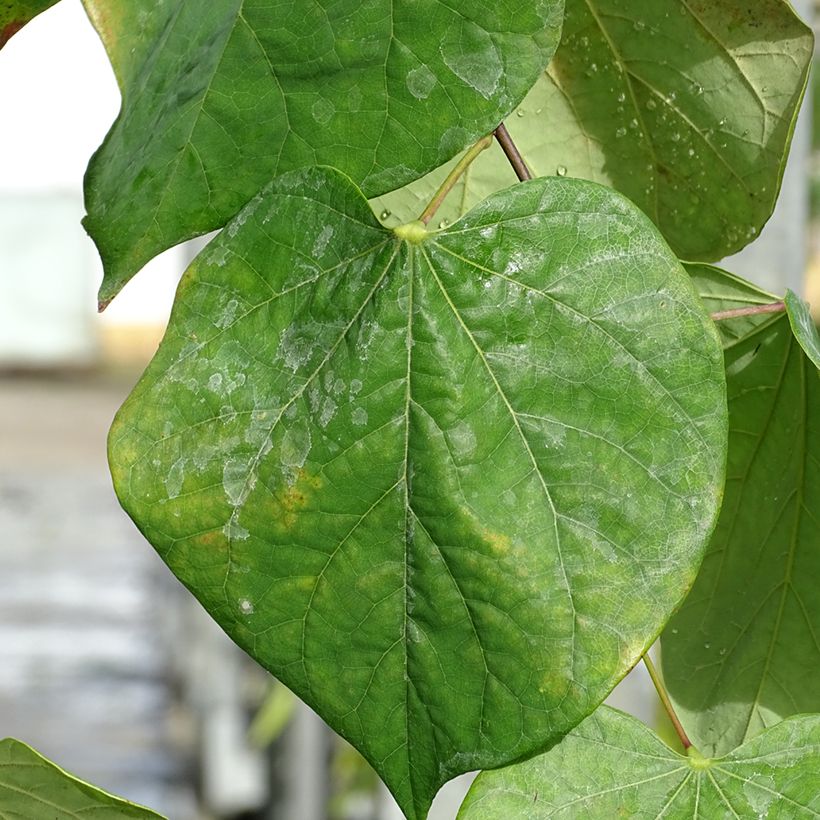

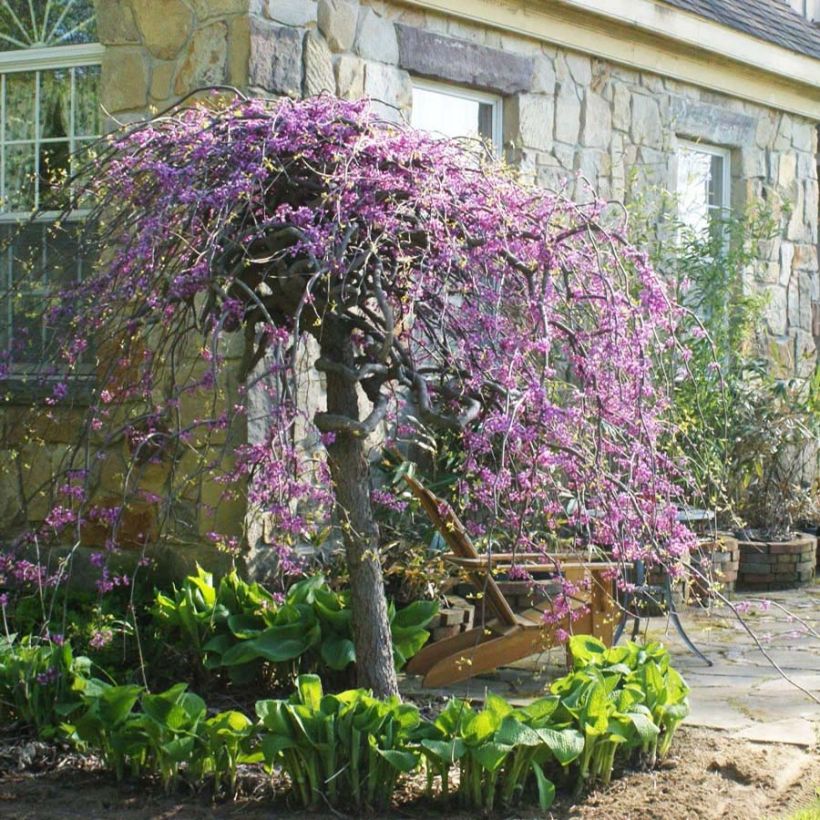

Plant habit
Flowering
Foliage
Botanical data
Cercis
canadensis
Lavender Twist
Fabaceae
Eastern Redbud, Canadian Redbud, American Redbud, Judas Tree
Cultivar or hybrid
Other Cercis
View all →Planting and care
Lavender Twist loves the sun or partial shade. It is not very demanding in terms of soil, as long as it is deep and retains moisture. In nature, this tree often grows near watercourses. In poor soil, enrich the planting soil with good compost or potting soil. Water it regularly during the first seasons in case of drought, as it is sensitive to long periods of summer drought. It tolerates all types of soil but prefers neutral or acidic soils. It is perfectly hardy (-20° C (-4° F)), but young shoots may suffer in case of severe frost in early spring. Protection with winter fleece can be useful in the first years in case of a severe cold spell in March.
Planting period
Intended location
Care
Planting & care advice
-
, onOrder confirmed
Reply from on Promesse de fleurs
Similar products
Haven't found what you were looking for?
Hardiness is the lowest winter temperature a plant can endure without suffering serious damage or even dying. However, hardiness is affected by location (a sheltered area, such as a patio), protection (winter cover) and soil type (hardiness is improved by well-drained soil).

Photo Sharing Terms & Conditions
In order to encourage gardeners to interact and share their experiences, Promesse de fleurs offers various media enabling content to be uploaded onto its Site - in particular via the ‘Photo sharing’ module.
The User agrees to refrain from:
- Posting any content that is illegal, prejudicial, insulting, racist, inciteful to hatred, revisionist, contrary to public decency, that infringes on privacy or on the privacy rights of third parties, in particular the publicity rights of persons and goods, intellectual property rights, or the right to privacy.
- Submitting content on behalf of a third party;
- Impersonate the identity of a third party and/or publish any personal information about a third party;
In general, the User undertakes to refrain from any unethical behaviour.
All Content (in particular text, comments, files, images, photos, videos, creative works, etc.), which may be subject to property or intellectual property rights, image or other private rights, shall remain the property of the User, subject to the limited rights granted by the terms of the licence granted by Promesse de fleurs as stated below. Users are at liberty to publish or not to publish such Content on the Site, notably via the ‘Photo Sharing’ facility, and accept that this Content shall be made public and freely accessible, notably on the Internet.
Users further acknowledge, undertake to have ,and guarantee that they hold all necessary rights and permissions to publish such material on the Site, in particular with regard to the legislation in force pertaining to any privacy, property, intellectual property, image, or contractual rights, or rights of any other nature. By publishing such Content on the Site, Users acknowledge accepting full liability as publishers of the Content within the meaning of the law, and grant Promesse de fleurs, free of charge, an inclusive, worldwide licence for the said Content for the entire duration of its publication, including all reproduction, representation, up/downloading, displaying, performing, transmission, and storage rights.
Users also grant permission for their name to be linked to the Content and accept that this link may not always be made available.
By engaging in posting material, Users consent to their Content becoming automatically accessible on the Internet, in particular on other sites and/or blogs and/or web pages of the Promesse de fleurs site, including in particular social pages and the Promesse de fleurs catalogue.
Users may secure the removal of entrusted content free of charge by issuing a simple request via our contact form.
The flowering period indicated on our website applies to countries and regions located in USDA zone 8 (France, the United Kingdom, Ireland, the Netherlands, etc.)
It will vary according to where you live:
- In zones 9 to 10 (Italy, Spain, Greece, etc.), flowering will occur about 2 to 4 weeks earlier.
- In zones 6 to 7 (Germany, Poland, Slovenia, and lower mountainous regions), flowering will be delayed by 2 to 3 weeks.
- In zone 5 (Central Europe, Scandinavia), blooming will be delayed by 3 to 5 weeks.
In temperate climates, pruning of spring-flowering shrubs (forsythia, spireas, etc.) should be done just after flowering.
Pruning of summer-flowering shrubs (Indian Lilac, Perovskia, etc.) can be done in winter or spring.
In cold regions as well as with frost-sensitive plants, avoid pruning too early when severe frosts may still occur.
The planting period indicated on our website applies to countries and regions located in USDA zone 8 (France, United Kingdom, Ireland, Netherlands).
It will vary according to where you live:
- In Mediterranean zones (Marseille, Madrid, Milan, etc.), autumn and winter are the best planting periods.
- In continental zones (Strasbourg, Munich, Vienna, etc.), delay planting by 2 to 3 weeks in spring and bring it forward by 2 to 4 weeks in autumn.
- In mountainous regions (the Alps, Pyrenees, Carpathians, etc.), it is best to plant in late spring (May-June) or late summer (August-September).
The harvesting period indicated on our website applies to countries and regions in USDA zone 8 (France, England, Ireland, the Netherlands).
In colder areas (Scandinavia, Poland, Austria...) fruit and vegetable harvests are likely to be delayed by 3-4 weeks.
In warmer areas (Italy, Spain, Greece, etc.), harvesting will probably take place earlier, depending on weather conditions.
The sowing periods indicated on our website apply to countries and regions within USDA Zone 8 (France, UK, Ireland, Netherlands).
In colder areas (Scandinavia, Poland, Austria...), delay any outdoor sowing by 3-4 weeks, or sow under glass.
In warmer climes (Italy, Spain, Greece, etc.), bring outdoor sowing forward by a few weeks.






























